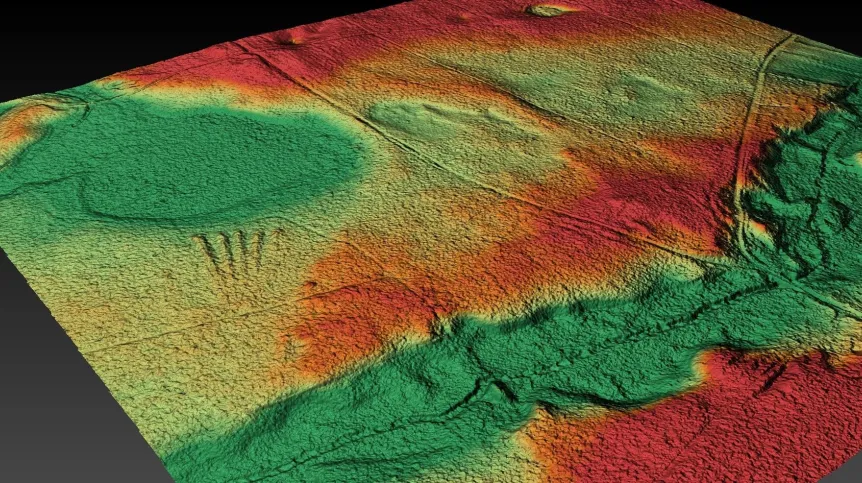
Archaeologists are planning to track down ‘lost’ prehistoric tombs in the west of Poland.
The team from the Adam Mickiewicz University in Poznań will use Airborne Laser Scanning, geomagnetic methods and drilling in their search for what have been described as the ‘lost megaliths of Wielkopolska’.
The first monumental megalithic tombs were discovered in the region in 2019, when archaeologists came across tombs erected in the 4th millennium BCE.
Standing three-metres-tall and built in the shape of an elongated triangle, the structures were surrounded with large stone blocks with their bases measuring 6 to 15 meters wide and 150 meters long.
Dr. Danuta Żurkiewicz said: “These mounds stood out in the natural landscape, constituting a kind of marker that the area, in which they were built, belonged to a given group.
“They also testified to the high level of community organization and willingness to make the effort associated with erecting them.”
A year later, archaeologists conducted limited-scale excavations that confirmed that the shapes in the images actually show pre-historic Kuyavian tombs.
Named after the region Kujawy, where the majority of similar structures have been discovered, these tombs are considered to be among the largest sepulchral structures erected in prehistory in Poland.
The Kuyavian tombs were not only the burial places of selected representatives of local communities, but also important points related to the cult of the dead.
Since their 2019 discovery, however, there has been no sign of them.
But archaeologists believe there are more.
Dr. Żurkiewicz said: “There are many more such structures in Wielkopolska. We have already selected several other places. In the near future, we will go to the field to confirm that they are actually there',
The archaeologists will decide where to investigate after using ALS to select possible locations in the basin of the river Warta,
They will also examine the surroundings of the tombs and check how much the people living at the time of their construction affected the surrounding environment.
To do this, they will analyse the pollen content in samples from deep boreholes (which will tell which plants were growing at that time, and which became more and less common over time).
This will her them work out the extent to which forests were cleared and which cultivated fields sown.
They also want to study the settlement network of tomb builders, who they define as the community of the Funnelbeaker Culture.
PAP - Science in Poland, Szymon Zdziebłowski
szz/ ekr/ kap/
tr. RL













